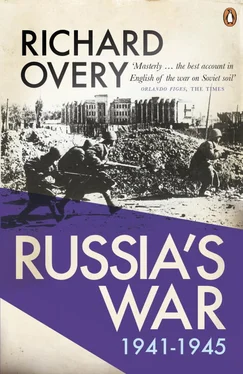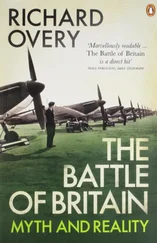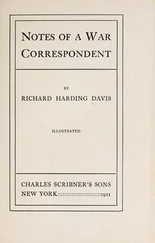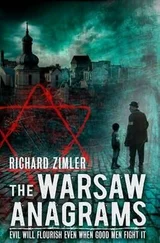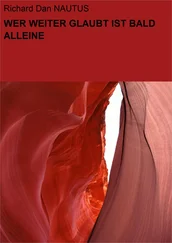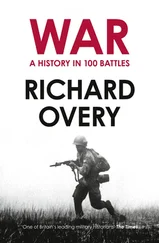Richard Overy - Russia's War
Здесь есть возможность читать онлайн «Richard Overy - Russia's War» — ознакомительный отрывок электронной книги совершенно бесплатно, а после прочтения отрывка купить полную версию. В некоторых случаях можно слушать аудио, скачать через торрент в формате fb2 и присутствует краткое содержание. Город: London, Год выпуска: 1999, ISBN: 1999, Издательство: Penguin Books Ltd, Жанр: military_history, на английском языке. Описание произведения, (предисловие) а так же отзывы посетителей доступны на портале библиотеки ЛибКат.
- Название:Russia's War
- Автор:
- Издательство:Penguin Books Ltd
- Жанр:
- Год:1999
- Город:London
- ISBN:978-0-14-192512-7
- Рейтинг книги:4 / 5. Голосов: 1
-
Избранное:Добавить в избранное
- Отзывы:
-
Ваша оценка:
- 80
- 1
- 2
- 3
- 4
- 5
Russia's War: краткое содержание, описание и аннотация
Предлагаем к чтению аннотацию, описание, краткое содержание или предисловие (зависит от того, что написал сам автор книги «Russia's War»). Если вы не нашли необходимую информацию о книге — напишите в комментариях, мы постараемся отыскать её.
[Contain tables. Best viewed with CoolReader.]
Russia's War — читать онлайн ознакомительный отрывок
Ниже представлен текст книги, разбитый по страницам. Система сохранения места последней прочитанной страницы, позволяет с удобством читать онлайн бесплатно книгу «Russia's War», без необходимости каждый раз заново искать на чём Вы остановились. Поставьте закладку, и сможете в любой момент перейти на страницу, на которой закончили чтение.
Интервал:
Закладка:
From a policy of economic caution, Stalin moved to a strategy of massive stockpiling. The purpose was to provide the Red Army with the striking force necessary to destroy the putative enemy in a battle of annihilation, but the effect was to saddle the Soviet Union with a defence sector far larger than current international dangers justified and the armed forces with matériel that would soon be obsolescent. Nor, until the necessary personnel training was completed, could effective use be made of the strategy of ‘deep operations’ and the extensive stocks of current weapons. These issues were gradually addressed as Tukhachevsky took up the torch of professionalization once again. By 1932 two-thirds of the officer corps had been formally trained in military academies. Two years later the political officers were removed from all field formations, and their remaining influence at higher levels was much reduced. In 1935 the rank of Marshal of the Soviet Union was introduced, giving the military leadership a status it had not enjoyed since Tsarist times. The five new marshals included Voroshilov and Tukhachevsky and the former Tsarist general, Aleksandr Yegerov. 35By the mid-1930s the military had become a part of the new Soviet élite. That achievement alone may explain the paradox of its downfall. For at the very moment that Tukhachevsky had begun to build up large, modern armed forces, freer than ever before of narrow political interference, the military leadership was swept away in a violent, nation-wide purge.
The crisis that destroyed the military establishment in 1937 can be understood only against the wider background of the state terror practised from the first weeks of the infant Bolshevik regime in 1917. One of Lenin’s first acts was to re-form Russia’s political police force, the Cheka, an organization that may have been responsible for the violent deaths of at least 250,000 people during the civil war. The Cheka conditioned Communist leaders to the brutalization of the revolution. They were brought up to believe that class war was to be fought with a merciless ferocity against anyone, enemy and erstwhile friend alike, who threatened to undermine the revolutionary achievement or challenge the authority of the Party, the vanguard of the proletarian movement. During the civil war there was real resistance, but the term ‘class enemy’ was applied without discrimination against whole groups whose social position or national loyalty defined them as counter-revolutionaries. The nature of the terror changed from a savage reaction to civil conflict to an instrument for sustaining popular mobilization and allegiance. The creation of imagined enemies, and the constant fear of conspiracy, foreign spies and sabotage to which it gave rise, became a central feature of Soviet political culture. It encouraged a popular vigilance, whose darker face was revealed in the hysterical climate of denunciation and betrayal by which Soviet society, like other revolutionary societies before and since, was periodically engulfed.
The end-product of the system of terror was either refined and soul-breaking torture and a bullet in the back of the neck, or a long spell in a prison camp. The first Soviet forced-labour camps were set up in the early 1920s. Like their Tsarist predecessors they housed a mixture of regular criminals and political dissidents, the latter preyed upon by the former. Those deemed to be hardened enemies of the revolution were transported to the first Soviet concentration camp for political opponents, on the island of Solovki in the White Sea. Housed in a sixteenth-century monastery, the camp was opened in 1923. It was run by the organization that succeeded the Cheka, the State Political Directorate (OGPU), established the same year. The euphemistic title shielded the identity of the state security police who ran the system from the Internal Affairs Commissariat (NKVD). Long before the Stalinist terror of the 1930s, the regime imprisoned or executed thousands in the name of political conformity. OGPU officials, working in the notorious Lubyanka prison in Moscow, beat, tortured, raped and blackmailed their victims, in order to extract fanciful confessions of counter-revolutionary crimes. Even genuine dissidents were made to own up to grotesque conspiracies and ‘deviationism’ quite unrelated to the usually banal pretext for their arrest. Confessions earned a mandatory twenty-five-year sentence, which only the hardiest or the luckiest survived. 36
Two things combined to turn the revolutionary terror of the 1920s into the frantic blood-lettings of the 1930s. First came the drive for forced modernization, the ‘Second Revolution’. The embattled Party found itself facing widespread opposition from the peasants (and from peasants in uniform, who made up 70 per cent of the army rank and file) as the reforms were pushed through. 37The social crisis revived the atmosphere of the civil war, and, as in that earlier conflict, the Party conjured up counter-revolutionary phantoms to secure wider support for radical change. A collective paranoia increasingly permeated every level of the state, down to individual factories or collective farms, where every broken machine or tractor was attributed to counter-revolutionary ‘hooligans’. More often than not the hapless victims were ill-educated, technically illiterate peasant-workers whose only crime was ignorance, drunkenness or poor timekeeping. But they were also plant managers who undershot their monthly quota or engineers who wrestled to install sophisticated foreign machinery in crude, cold and ill-lit workshops. The modernization drive provoked a national witch-hunt, for which there was no rational foundation. As in the witch-hunts of an earlier age, there was no defence. It was sufficient to point the finger of blame; local kangaroo courts did the rest. There was no appeal. Thousands of peasants and workers found themselves shipped to the growing empire of camps stretched across the Soviet Union, understanding neither their crime nor their persecutors.
Most of the victims of the 1930s were peasants, whose way of life was violently overturned in order to modernize Soviet society. The chaotic conditions of 1932 and 1933, when collectivization was at its height, generated the worst famine of the century. In the grain-rich regions of the Ukraine, the northern Caucasus and Kazakhstan, peasant resistance brought on the full fury of the Party. The farmers’ own food was seized, even the seed for the following year’s planting. Stalin ordered the security police to seal off the whole of the Ukraine from the rest of the Soviet Union to prevent anyone from leaving or food from getting in. It was almost certainly Stalin’s single most murderous act. The most recent Russian estimates indicate a death toll of 4.2 million in the Ukraine alone in 1933. Whole villages starved to death or were dispatched by epidemics to which there was scant bodily resistance. 38In Kazakhstan the mainly nomadic farmers were forced into crude camps and left to die. An estimated 1.7 million, almost half the population of the republic, perished in the most wretched conditions. 39Thousands fled across the Soviet border to escape the death camps. In total an estimated 7 million fell victim to the class war launched in the countryside. Stalin told a critic in 1933 that it was the fault of the peasantry, for waging ‘silent war’ against the Soviet state.
The second factor that transformed the nature of the terror in the 1930s was the personality of Stalin. It is hard to judge whether he himself believed the Jacobin statements about the defence of the revolution or the Leninist heritage with which he publicly justified the war on the peasants and the elimination of political enemies. They were useful rallying cries in the internal Party struggles of the 1920s, when Stalin successively rid himself of his most powerful rivals among the old Bolshevik élite – Trotsky and Grigory Zinoviev in 1927, Nikolai Bukharin in 1929 – but Stalin’s opportunism in these cases was self-evident. The campaigns of the 1930s against the rich peasant or the industrial saboteur can be explained, though hardly excused, as the product of a deliberate manipulation of popular opinion to secure the Party’s goals. Stalinist demonology made the whole system paranoid, but it was not necessary for the leader to share those fears.
Читать дальшеИнтервал:
Закладка:
Похожие книги на «Russia's War»
Представляем Вашему вниманию похожие книги на «Russia's War» списком для выбора. Мы отобрали схожую по названию и смыслу литературу в надежде предоставить читателям больше вариантов отыскать новые, интересные, ещё непрочитанные произведения.
Обсуждение, отзывы о книге «Russia's War» и просто собственные мнения читателей. Оставьте ваши комментарии, напишите, что Вы думаете о произведении, его смысле или главных героях. Укажите что конкретно понравилось, а что нет, и почему Вы так считаете.
